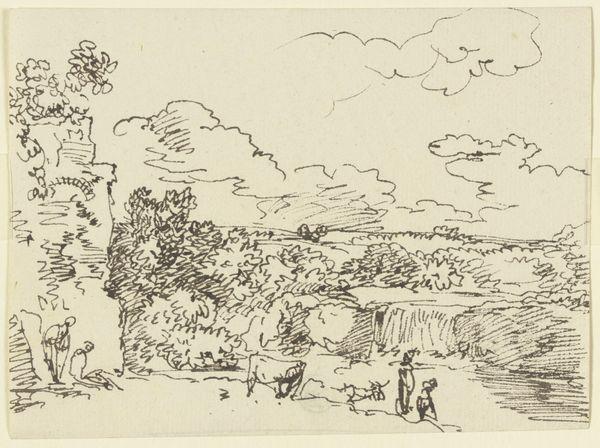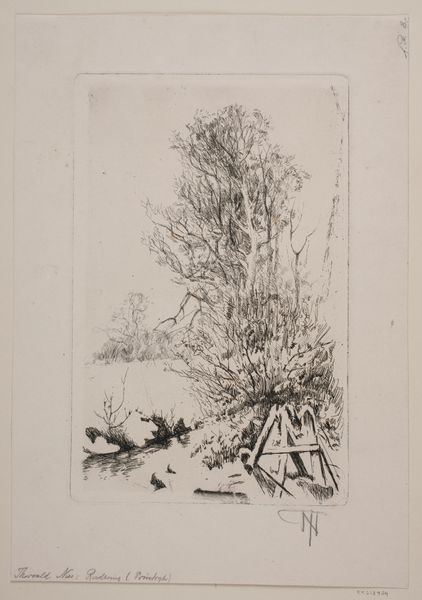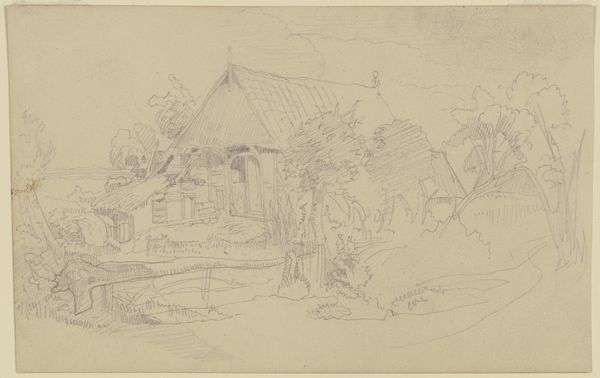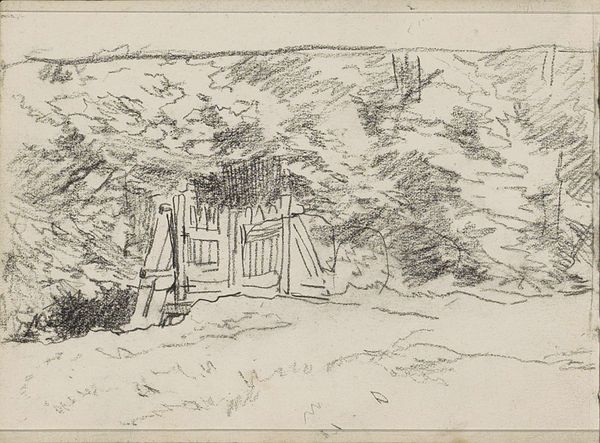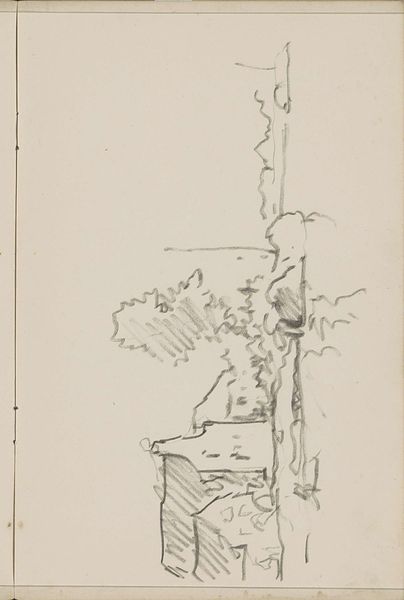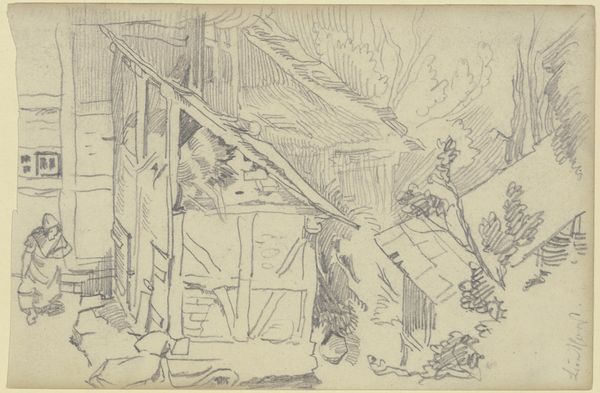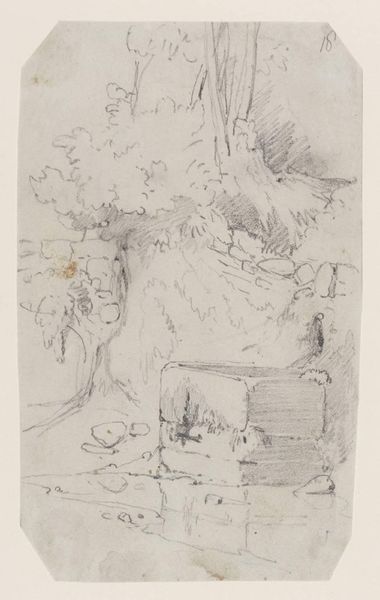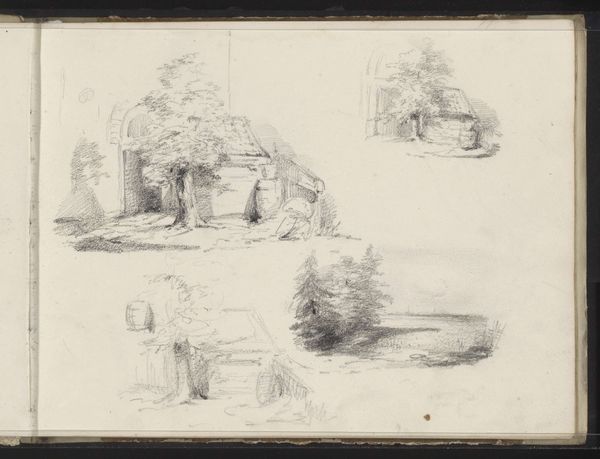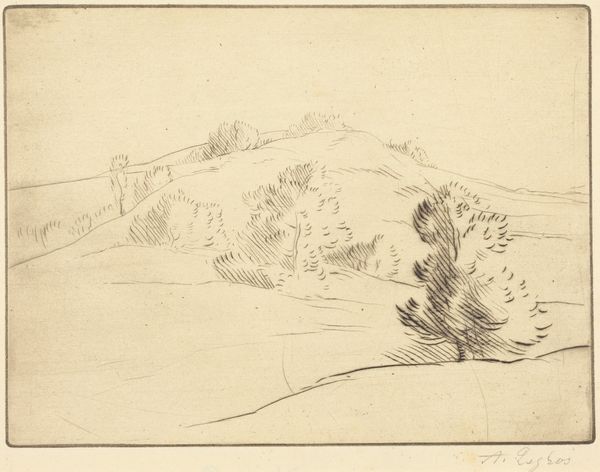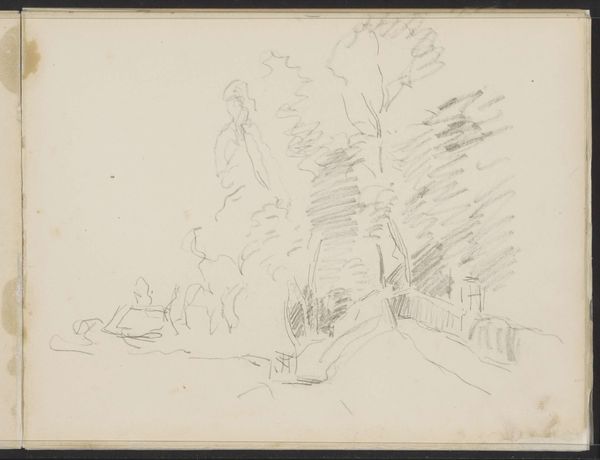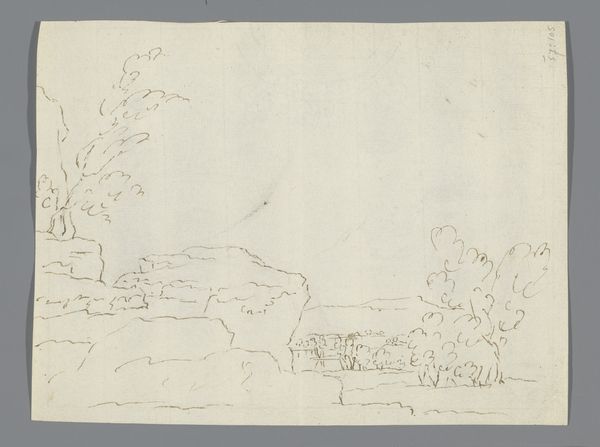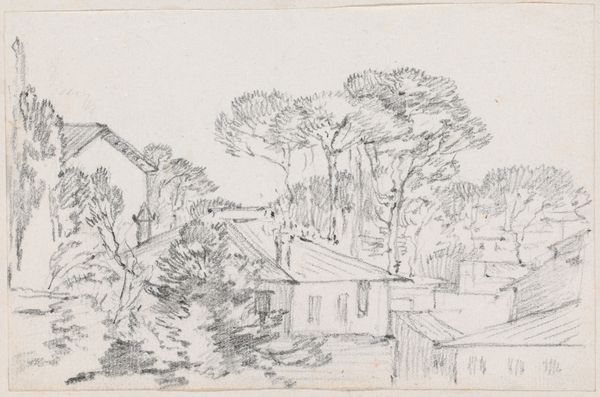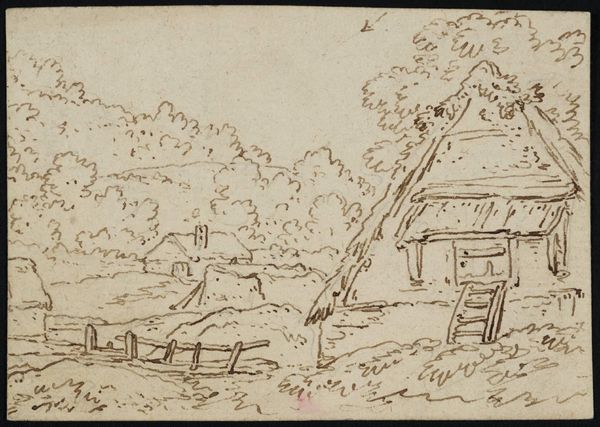
drawing, ink, architecture
#
drawing
#
netherlandish
#
baroque
#
landscape
#
ink
#
architecture
Copyright: Public Domain
Curator: This is "Well in front of a hut," a drawing in ink by Rembrandt van Rijn, currently residing here at the Städel Museum. Editor: It feels immediate, doesn’t it? A kind of captured moment. Stark lines but softened around the edges, giving it a sense of… fleeting intimacy, perhaps? A sense of domesticity set against the raw reality of daily life. Curator: It's fascinating to consider Rembrandt’s landscape drawings like this one within the broader context of his work and the 17th century. Often, they were not finished works in themselves, but rather studies of the world around him. It allows for a very personal reading. He's thinking about architecture, about spatial relationships, about light and shadow... Editor: Exactly, and for whom were these “studies”? Did Rembrandt intend for the everyday person to see these? This is important if we are considering any political intention behind these pieces or if this intention even exists. Were these pieces only shared in an academic or high society setting? I imagine their meanings were altered based on their audiences and accessibility. Curator: That's an interesting question, and one debated heavily among scholars. What role does access to water –represented by the well – play? I am compelled by what we are seeing in these landscape works in relation to those structures of power during the time. The social conditions in play are vital for understanding what this work can suggest to us now. Editor: I agree wholeheartedly! And those simple architectural structures take on a whole new layer when contextualized within the narratives of labor, resource distribution, and maybe even survival, no? It pushes beyond just being a "well." It becomes a nexus point for various social dynamics. Curator: Precisely. And seeing it here, in the museum, invites us to continue that line of questioning, re-examining those relationships across history and in our present moment. Editor: Indeed. It’s not just about Rembrandt's skill; it's about the ongoing dialogue that art initiates about how we live, build, and survive in the world, both then and now.
Comments
No comments
Be the first to comment and join the conversation on the ultimate creative platform.

